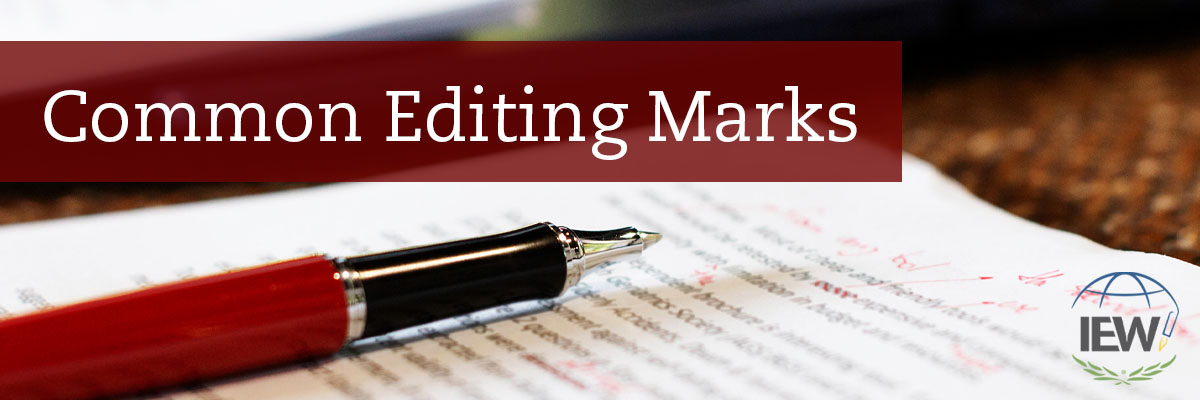
Early in the Structure and Style for Students courses, Andrew Pudewa exhorts his students to hire an editor. While a variety of editorial roles (content editors and copy editors, for example) exists, in this case Andrew is specifically requesting that the editor take a light touch and focus only on grammar, punctuation, and spelling errors. He also reminds his pupils to compensate their editors accordingly.
Most of the time the editors hired are parents or teachers although neighbors, grandparents, and siblings are sometimes tapped for the honor. This short post is dedicated to all of those special people. If you are one, keep reading because it will hopefully condense your editing time by sharing some common editing marks designed to make your work less time consuming. With luck this will open up more of your day for other tasks or pleasures, as the case may be. Share this post with your students so that they will be able to understand and react accordingly to the rather quizzical notations that you will be inserting into their compositions. Editing marks are helpful for both the writer and the editor!
(The above image is pulled from the Student Resource Packet, a PDF of which is included with IEW’s Premium Membership.)
Having your students adjust to understanding these editing marks will save time. Because they are standard, students will likely see them used by future instructors as well and will not be intimidated by them. All in all, using editing symbols makes the writing process more efficient for everyone.
|
Jennifer Mauser has always loved reading and writing and received a B.A. in English from the University of Kansas in 1991. Once she and her husband had children, they decided to homeschool, and she put all her training to use in the home. In addition to homeschooling her children, Jennifer teaches IEW classes out of her home, coaches budding writers via email, and tutors students who struggle with dyslexia. |

